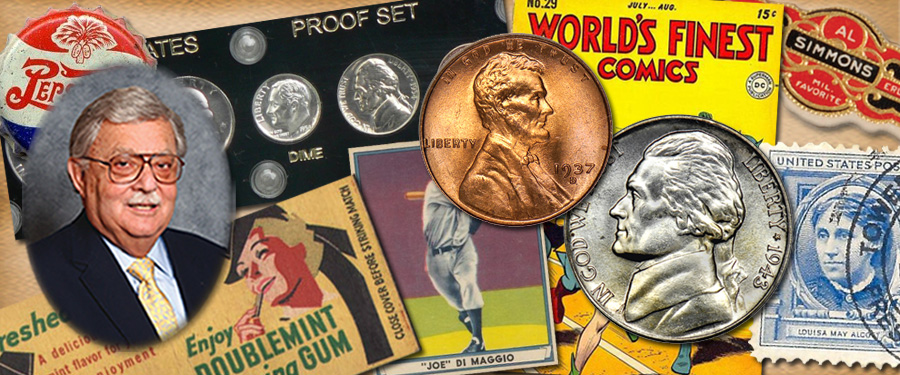
So, coin collecting for me as a youngster and teenager was limited to what I could find in change or occasionally pick up at the shop either as an inexpensive purchase or as a reward for extra work. Likewise collectors on limited budgets today — and I would think this is still the case for many youngsters — tend to concentrate on current denominations and commemorative issues. Of course, as noted, keeping up with the products of the U.S. Mint can be a daunting and expensive task, but some pieces are affordable and as noted in the last part of this article, the Statehood quarters (and now American the Beautiful quarters) offer a collectible coin at a face value price.
However, even collecting current designs can offer various challenges. Lincoln Head cents have been struck continuously from 1909 until the present day. From 1909 through 1958 the “Wheat cents” were made. During this same time frame the wartime zinc-coated steel cents were made in 1943. In 1959 the reverse was changed to the Memorial reverse featuring the Lincoln Memorial in Washington, DC. This change was made to celebrate the 150th anniversary of Lincoln’s birth. From that year until 2008 the design remained constant. Then, in 2009 to celebrate the 200th anniversary of Lincoln’s birth the cent was struck with four different reverse designs. In 2010 the reverse changed again to a Shield design, and it has remained thus to the present day.
After the reverse design change in 1959, people began to save Wheat cents, in piggy banks, jars, coffee cans and other containers. This was a very low cost form of collecting and kept many of the older cents from being retired from circulation. While this made Wheat cents rare in pocket change, it kept many of the later years of this design available. Now youngsters and other “budget” collectors can have the fun of rummaging through these jars and cans to see how many “Wheatbacks” they can find. However, earlier date Wheat cents, as well as special varieties are hard to find, and usually require purchase from a coin dealer or other outlet.
Finding nickel five-cent pieces with the Jefferson design offered its own challenges. On the positive side, there were fewer years to go back as Jefferson nickels were not struck until 1938. Similar to the Lincoln cents, a different alloy was used during the war years (1942 to 1945). The Jefferson nickel also had minor design changes, but the first real “redesign” came with the “Westward Journey” nickels of 2004 and 2005, commemorating the bicentennial of the Louisiana Purchase and the Lewis and Clark Expedition. In 2006 the Monticello reverse design was reverted to, but the obverse featured a new Jefferson portrait.
While billions have been struck since 1938, the Jefferson nickel was a workhorse denomination. They were used in all kinds of slot machines, on trans or buses, in candy machines, pay telephones and many other devices. Many things cost five cents at different times — chewing gum, candy bars, bread and more — meaning that nickels went back and forth to pay for many things or as change during transactions. Many became worn and some were worn out to the point where they were removed from circulation. Adding to all this was the fact that Jefferson nickels were not popular among collectors, especially coming on the heels of the extremely popular Buffalo nickel. So finding a full set was difficult and finding a full set in high grade was even harder, requiring a greater financial investment. But, still, Jefferson nickels were everywhere in change, making them a fun and interesting coin to “collect” for free (or, technically, for five cents). Of course, in more recent times collecting Jefferson nickels has become more specialized, with rare varieties and step counting gaining popularity.
I will continue next time with the silver denominations of the mid to late 20th century to the current time.





